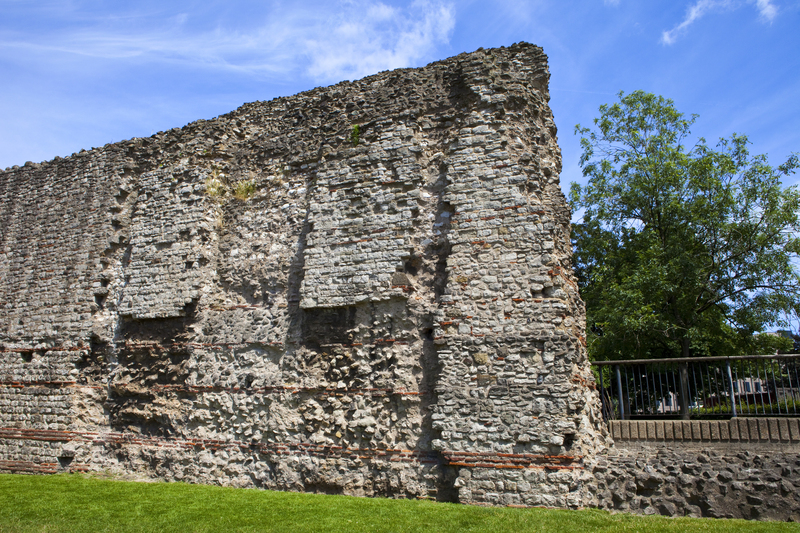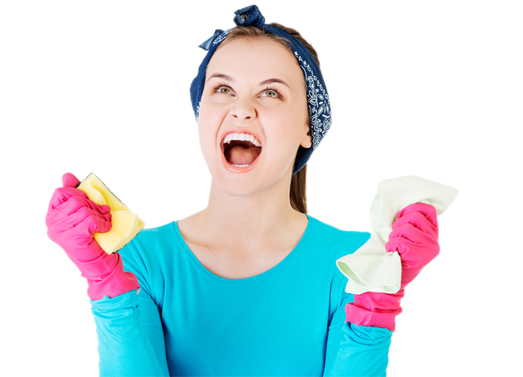Discover the Magic of Erasing Burnt Stains on Stovetops
Posted on 26/05/2025
Discover the Magic of Erasing Burnt Stains on Stovetops
Is your stovetop marred by unsightly burnt stains? You're not alone. Over time, even the most cautious home cooks can wind up with stubborn, baked-on marks on their stovetop surfaces. Fortunately, you don't have to live with them forever. Erasing burnt stains on stovetops is easier than you think, and in this comprehensive guide, we'll show you how to bring back that showroom shine while making clean-up a breeze!

Understanding the Problem: What Causes Burnt Stains on Stovetops?
Before jumping into the magic methods of removing burnt stovetop stains, it's wise to understand their origins. Burnt stains are typically caused by:
- Spills from boiling-over pots or splattering oil that aren't wiped up immediately.
- High heat cooking that causes food remnants to carbonize and bond with the surface.
- Improper cleaning techniques that push debris into hard-to-reach areas.
Left untreated, these stains not only look unattractive but may also reduce your stove's lifespan.
Why It's Crucial to Remove Burnt Stains from Your Stovetop
Cleaning burnt stains from stovetops serves several purposes, many of which go beyond simple aesthetics.
- Hygiene: Burnt food can harbor bacteria and unpleasant odors.
- Efficiency: Clean stovetops heat more evenly and efficiently.
- Maintenance: Regularly cleaning your stovetop prevents permanent damage and extends its lifespan.
- Value: A spotless appliance maintains its value and appeal.
Simply put: a clean stovetop means a healthier, safer, and more pleasant kitchen environment.
Types of Stovetops and Their Challenges
Different stovetop surfaces require unique cleaning methods to avoid damage:
- Glass & Ceramic Stovetops: Prone to scratching. Require non-abrasive cleaners.
- Gas Stovetops: Feature removable grates and burners, with stains accumulating both on the surface and components.
- Electric Coil Stovetops: Typically metal, can trap crumbs and burnt-on food beneath the coils.
- Induction Stovetops: Usually smooth and glass-like but still susceptible to tough, burnt-on marks.
Knowing your stovetop type informs which products and techniques you should use for safe, effective stain removal.
Essential Supplies for Erasing Burnt Stains on Stovetops
Before starting, gather the right cleaning arsenal to wipe away burnt stovetop stains safely and efficiently:
- Microfiber cloths
- Non-abrasive scrub pads or sponges
- Baking soda
- White vinegar
- Lemon juice
- Dish soap
- Plastic scraper or specialty razor blade tool (for glass/ceramic)
- Commercial stove top cleaners (optional)
- Rubber gloves
- Soft brushes or toothbrushes
Tip: Always consult your stovetop's manual for cleaning recommendations before using any new product or tool.
Step-by-Step Guide: Magic Methods to Remove Burnt Stovetop Stains
1. Safety First: Let It Cool and Unplug
Never clean a hot stove! Allow your stovetop to cool completely. For electric or induction types, unplug if possible.
2. Wipe Away Loose Debris
With a dry microfiber cloth, remove crumbs, loose burnt bits, and surface dust.
3. Use Baking Soda Paste
Baking soda is a magical natural abrasive that's gentle on surfaces. Mix baking soda and a little water into a paste. Spread generously over burnt stains on your stovetop.
- Let the paste sit for 10-20 minutes - this softens burnt-on debris.
- Gently scrub using a soft, damp sponge or cloth.
- Wipe residue away with a clean, wet cloth.
Erasing burnt-on stains with baking soda is often all it takes for moderate messes!
4. Power Up with Vinegar or Lemon Juice
For extra-tough stains, spray white vinegar or lemon juice onto the baking soda paste. Watch as the fizzing action helps loosen the grime. This combination is particularly effective for deeply burnt stains on glass stovetops.
5. Scraping with Care
For stubborn marks that just won't budge, use a plastic scraper or specialty razor blade at a 45-degree angle. Pushing gently, remove residue. This works wonders on flat surfaces, but never use metal tools on coil or other sensitive surfaces to avoid scratching.
6. Use Commercial Stove Top Cleaners (Optional)
Specialized cleaning products, such as stovetop cleaning creams, can tackle tenacious burnt stains on ceramic or induction stovetops when all else fails. Always follow the manufacturer's directions closely.
7. Finishing Touches: Shine and Protect
Wipe the stovetop with a damp microfiber cloth to remove all cleaning residues. Buff to a shine with a dry, soft cloth. For added protection, you can polish glass or ceramic stovetops with a specialty conditioner, helping to prevent future stains.
Top Tips for Burnt Stain Removal on Specific Stovetops
Glass or Ceramic Stovetop
- Always wait until cool before cleaning.
- Never use steel wool or abrasive pads, which can scratch.
- Baking soda paste is especially effective.
- Plastic scraper safe for flat surfaces.
Gas Stovetop
- Remove grates and burner covers. Soak them in hot soapy water, then use a brush.
- Clean around burners with a toothbrush dipped in vinegar.
- For the stovetop surface, use baking soda, vinegar, and a soft cloth.
Electric Coil Stovetop
- Unplug before cleaning.
- Lift and remove burners if possible; clean drip pans underneath.
- Use soapy water for coils; never submerge in water.
- Wipe the surface with baking soda paste and rinse well.
Induction or Smooth Stovetop
- Treat like glass or ceramic stovetops.
- Use gentle non-abrasive cleaners and soft tools.
- Buff to a streak-free finish with a microfiber towel.
Homemade Remedies and Eco-Friendly Tricks for Burnt Stain Removal
Prefer natural solutions to harsh chemicals? You're in luck! The following remedies work wonders for erasing burnt stains on stovetops while minimizing your chemical footprint:
- Baking Soda + Hydrogen Peroxide: For severe stains, mix baking soda and hydrogen peroxide into a thick paste. Apply to the stain, cover with a damp cloth, and let sit for 30 minutes before scrubbing.
- Vinegar Steam Treatment: Heat a small pot of vinegar to simmer on the stovetop (ensure the stains aren't directly under this burner). The steam will help loosen burnt debris for easier wiping.
- Lemon Juice Wonder: Lemon's acidity breaks down carbonized food. Soak a cloth in lemon juice and lay it over the stain for 10 minutes, then wipe.
These eco-friendly methods for burnt stain removal are not only sustainable but cost-effective!
What to Avoid When Removing Burnt Stains from Stovetops
Protect your investment by steering clear of harmful practices:
- Do not use steel wool, metal brushes, or abrasive powders on glass, ceramic, or induction!
- Never use oven cleaner unless specifically labeled safe for your stovetop.
- Avoid harsh chemicals like ammonia, especially near flame or hot surfaces.
- Don't try to scrape with knives or other metal objects--they cause scratches and permanent damage.
- If you're unsure, always check your manufacturer's website or manual for approved cleaning solutions.
How to Prevent Burnt Stains on Stovetops in the Future
- Wipe up spills immediately after cooking (once the surface cools).
- Use pot lids to prevent boil-overs.
- Clean your stovetop thoroughly at least once a week.
- Place drip trays or liners under burners when possible.
- Practice lower-heat cooking to reduce splatter and burning risk.
Prevention is the easiest way to keep your stovetop looking new -- saving you time and extra effort.
Answering Common Questions About Burnt Stovetop Stain Removal
- Q: Can you use Magic Erasers to clean burnt-on stains?
Yes, Magic Erasers (melamine foam sponges) are safe on most glass and ceramic stovetops but always test a small hidden area first. Do not use on surfaces prone to scratching. - Q: How do you deal with burnt sugar stains?
Burnt sugar can be very sticky. First, soften it with a little water and heat, allow to cool, then scrape gently with a plastic scraper, finishing with baking soda paste. - Q: Are commercial store-bought cleaners better than DIY methods?
Both work well, but DIY solutions save money and are gentler. For continuous heavy-duty cleaning, commercial products may offer quicker results. - Q: Will vinegar or baking soda damage my stove's finish?
Not if used properly. Vinegar is safe on most glass, ceramic, and metal surfaces; baking soda should not be left to dry and should always be thoroughly rinsed to prevent residue buildup.

Magic Restored: Enjoy Your Gleaming, Burnt-Stain-Free Stovetop!
There's undeniable satisfaction in transforming a stained stovetop into a gleaming focal point of your kitchen. By following these magic burnt stain erasing methods for stovetops, you can make this transformation a reality -- all with simple household ingredients and a little patience.
Remember, erasing burnt stains from your stovetop not only enhances its look but also protects your family's health and extends your appliance's lifespan. Stick to a regular cleaning schedule, practice safe and gentle cleaning techniques, and your stovetop will reward you with sparkling clean results for years to come.
So, the next time you spot a stubborn burnt stain on your stove, don't despair -- grab your supplies and let the magic of proper cleaning do its work!
Summary: Tips at a Glance
- Clean up spills promptly to prevent burnt stains from forming.
- Use gentle, non-abrasive methods for sensitive stovetops.
- Baking soda, vinegar, and lemon are effective DIY cleaners.
- Avoid harsh chemicals and abrasive tools.
- Regular maintenance keeps your stovetop in top shape.
Happy cleaning--and enjoy the sparkle!



